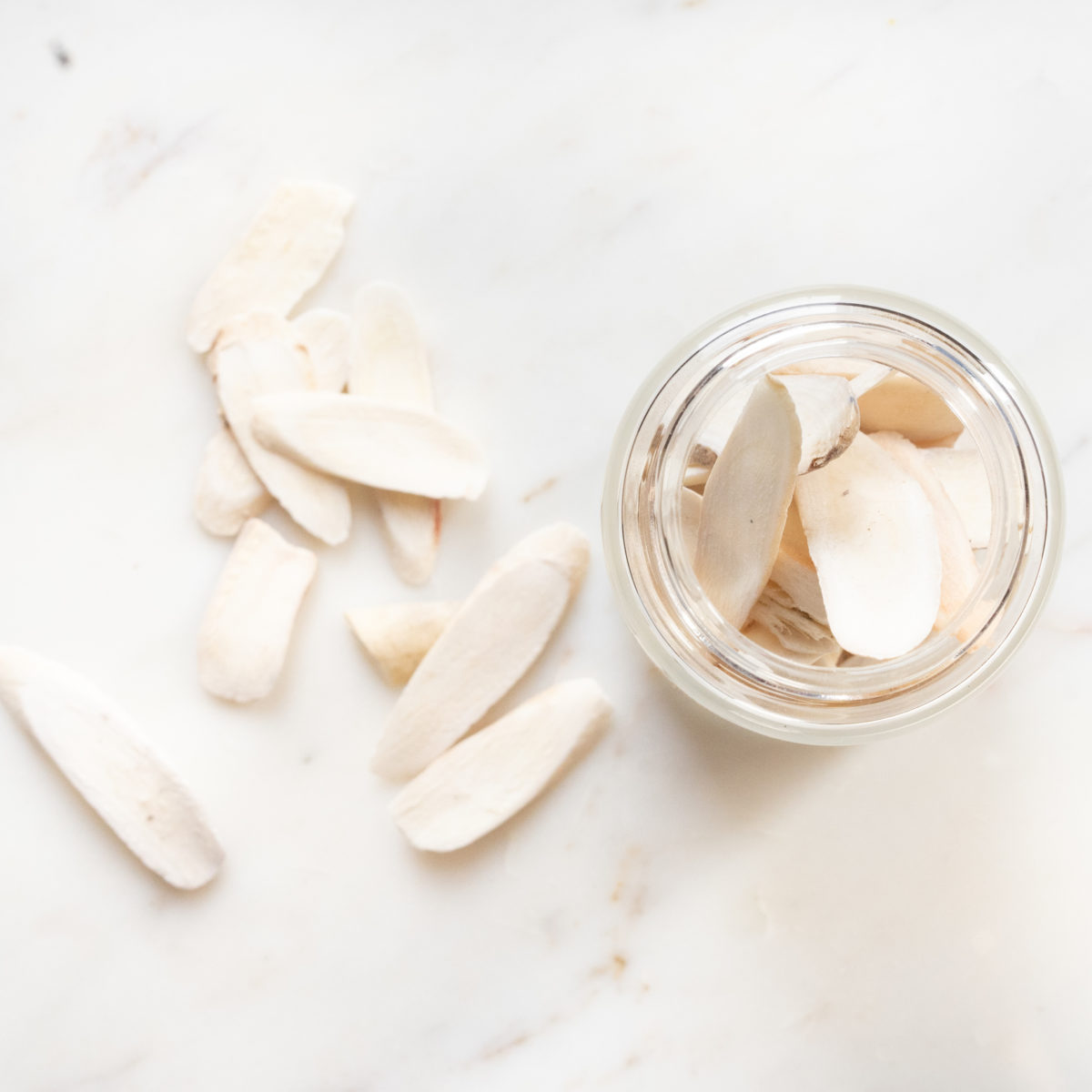
COMMON NAME (Chinese Name)
White Peony (Bai shao)
BOTANICAL NAME
Paeonia Lactiflora
USES
White peony is an anticoagulant and an antioxidant, and may also block lactic acid and other internal chemical buildup that leads to muscle cramps. As a result, oral peony root supplements have some success augmenting other herbal and pharmaceutical treatments for chronic cramps and joint inflammation, including the muscle cramps and spasms that cause migraine headaches and angina (chest pain) in people who are under stress. What’s more, white peony has a long history of use for treating period cramps (and can be especially effective when used in combination with Dong Quai), making peony decoctions one of the more useful at-home remedies for dysmenorrhea.
When used in topical applications, peony has been shown to diminish the appearance of wrinkles, fine lines, sunspots, and uneven skin texture. As a result, it has recently gained popularity as an ingredient in natural, botanically-based, and other eco-friendly skin care and cosmetic products.
In Chinese medicine, white peony is a premiere blood tonic. It’s categorized in TCM as a blood builder, and especially good for anemia. White peony is classified in Chinese medicine as cool, bitter, and sour and affects the Liver and Spleen meridians. Its uses in TCM are similar to chi shao (red peony) which is the same plant with the root bark intact.
PREPARATION & ADMINISTRATION
The most commonly-used parts of peony plants for medicinal purposes are the roots. The flowers and the seeds are also sometimes used in teas and tinctures. Red and white peony are not distinctly different herbs; rather, white peony root is peeled while red peony root is not. People often find white peony somewhat less powerful in medicinal uses, since peeling the bark off the root removes some of the most concentrated oils. White peony can be taken orally or applied topically.
PRECAUTIONS
Folks currently taking anticoagulant, anti-platelet, or blood-thinning prescriptions should not take oral white peony supplements, since it could magnify the effects of such medications; however, there isn’t research available about whether the same is true for peony-based skin creams and cosmetics.
Chinese medicine warns against its use in postpartum bleeding and for rashes and eczema, It is not recommended for cold, deficient people.
You should consult with a certified herbalist, physician or other qualified healthcare professional before taking white peony.
REFERENCES
Dharmananda, Subhuti, and Christopher Dorr. “SHAOYAO: WHITE AND RED PEONY.” White Peony, Red Peony, and Moutan: Three Chinese Herbs Derived from Paeonia
Peony, https://wa.kaiserpermanente.org/kbase/topic.jhtml?docId=hn-3658006
“Peony (Paeonia Spp) Monograph.” Peony (Paeonia Spp) Monograph, AltMedRev, http://www.altmedrev.com/archive/publications/6/5/495.pdf
“Peony: Health Benefits, Uses, Side Effects, Dosage & Interactions.” RxList, RxList, 17 Sept. 2019
Peony: Uses, Side Effects, Interactions, Dosage, and Warning. (n.d.). Retrieved from https://www.webmd.com/vitamins/ai/ingredientmono-32/peony.
“What’s Inside: Here’s What Peony Can Do for Your Skin.” BareMinerals
